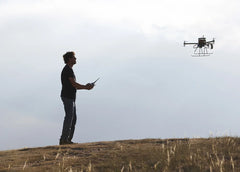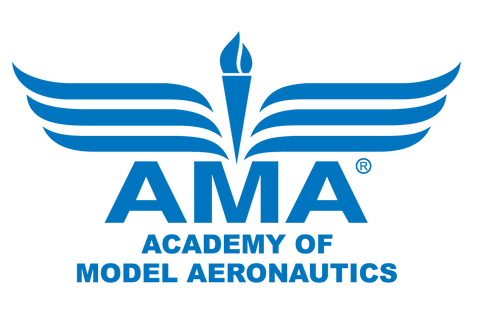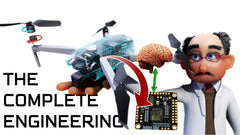Flying Rules and Regulations
What is a Recreational Flight?
 Many people assume that a recreational flight simply means not flying for a business or being compensated. But, that's not always the case. Compensation, or the lack of it, is not what determines if a flight was recreational or not. Before you fly your drone, you need to know which regulations apply to your flight.
Many people assume that a recreational flight simply means not flying for a business or being compensated. But, that's not always the case. Compensation, or the lack of it, is not what determines if a flight was recreational or not. Before you fly your drone, you need to know which regulations apply to your flight.The default regulation for drones weighing under 55 pounds is Part 107. Almost all non-recreational drone flying is regulated by Part 107.
- Note: Non-recreational drone flying include things like taking photos to help sell a property or service, roof inspections, or taking pictures of a high school football game for the school's website. Goodwill can also be considered non-recreational. This would include things like volunteering to use your drone to survey coastlines on behalf of a non-profit organization.
Remember, if you’re not sure which rules apply to your flight, fly under Part 107. Congress created the Exception for Limited Recreational Operations of Unmanned Aircraft to allow those flying drones purely for fun or personal enjoyment to operate without complying with Part 107. People flying under this Exception are required to comply will all rules for recreational flyers.
What are the Rules for Recreational Flyers?
The Exception for Limited Recreational Operations of Unmanned Aircraft (USC 44809) is the law that describes how, when, and where you can fly drones for recreational purposes. Following these rules helps keep people, your drone and our airspace safe:
recreational purposes. Following these rules helps keep people, your drone and our airspace safe:
 recreational purposes. Following these rules helps keep people, your drone and our airspace safe:
recreational purposes. Following these rules helps keep people, your drone and our airspace safe:- Fly only for recreational purposes (personal enjoyment).
- Follow the safety guidelines of an FAA-recognized Community Based Organization(CBO).
For more information on how to become an FAA-recognized CBO, read Advisory Circular 91-57C. - Keep your drone within the visual line of sight or use a visual observer who is co-located (physically next to) and in direct communication with you.
- Give way to and do not interfere with other aircraft.
- Fly at or below FAA-authorized altitudes in controlled airspace (Class B, C, D, and surface Class E designated for an airport) only with prior FAA authorization by using LAANC or DroneZone.
- Fly at or below 400 feet in Class G (uncontrolled) airspace.
Note:Anyone flying a drone in the U.S. National Airspace System (NAS) is responsible for flying within the FAA guidelines and regulations. That means it is up to you as a drone pilot to know the rules: Where Can I Fly? - TakeThe Recreational UAS Safety Test (TRUST) and carry proof of test passage when flying.
- Have a current FAA registration, mark (PDF) your drones on the outside with the registration number, and carry proof of registration with you when flying.
Note: Beginning September 16, 2023, if your drone requires an FAA registration number it will also be required to broadcast Remote IDinformation (unless flown within a FRIA). For more information on drone registration, visit How to Register Your Drone. - Do not operate your drone in a manner that endangers the safety of the national airspace system.
---------------------------------------------------
 What is the AMA?
What is the AMA?
The Academy of Model Aeronautics is a nonprofit community of enthusiasts who come together to celebrate model aviation.
We are hobbyists who dream, design, build, and fly model aircraft of all sizes for fun and competition. We do this because we enjoy the company of fellow enthusiasts, we love flight, and we want to see participation in our hobby grow.
Our nationwide network of clubs supports this passion by providing flying fields, mutual learning, and a safe and fun environment for model aviation activities. Our organization advocates every day for the safe enjoyment of model aviation.
Our motto - Your Passion - Your Hobby - One Community



